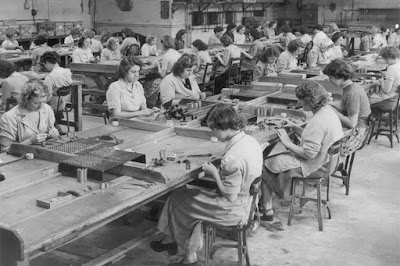Kolinsky sable brushes are considered one of the finest brushes you can use for miniature painting, specifically the Winsor & Newton Series 7 brushes.
Hand made in England, these brushes are actually intended for watercolour painting, but miniature painting works very similarly. You need a fat brush that can hold a lot of water, with a fine tip for detail work. They have a great “spring” to them, snapping back into shape easily, which they retain for a long time (some people say the brushes can last for years if properly cared for). The name “Series 7,” dates back to 1866, when Queen Victoria gave the Winsor & Newton company a Royal Warrant to produce her favourite size watercolour brushes, the size 7. They continue making the same brushes in the same manner to this day.
Here’s a cool video about how they’re made:
Kolinsky is actually a type of weasel, not a sable, native to Siberia. As they do not do well in captivity, they must be hunted in their natural habitat in North East Asia. They’re considered a rodent and pest to local farms in the area, so they are culled each spring anyway. The animals are not just hunted specifically for their fur.
I haven’t broken down and paid $30-$40 for a Kolinsky brush myself (and that’s for a small Size 1 round brush - larger brushes for watercolour canvas can run hundreds of dollars), but I have bought a couple of $10-$15 natural hair brushes. Even these “cheaper” pony- and camel-hair brushes perform noticeably better than synthetic brushes, holding more water and keeping a better point, but I haven’t had them long enough to speak to their longevity.
All that said, there is still a definite place in your arsenal for cheap synthetic brushes, the kind you can get 5 for 10 bucks at a craft or dollar store. Certain types of paint and techniques (such as inks, contrast paints, washes and glues for basing) will absolutely murder your brush bristles, so you don’t want to use your expensive brushes for those. Better to use the cheap brushes and toss them every couple of weeks/months as necessary, though even those really old battered brushes have their uses (or you can give them to your kids to let them paint!)
Actually, I'm using some of my kids' old craft brushes for gluing, so it goes both ways. Everything has a use, even crappy old brushes (and me!)
Hugs & Kisses,
-CDGK




4 comments:
Good ideas for recycling brushes. Weasel hair brushes, who'd have thunk it?
I guess weasel hair doesn't sound as inviting as sable does. I wonder how human hair would work...
I still feel bad for this weasel. One day they will hunted to close to extinction. That being said, I am amazed at these ladies and how they can create these brushes. I hope they have people behind them learning the craft. I'd love to own one but they are expensive
I used to be a signwriter - painted signs - so I had many specialist brushes - long flat ended ones called chisels and ones that come to a point called pencils, somewhat confusingly. I enjoyed this piece...
Post a Comment